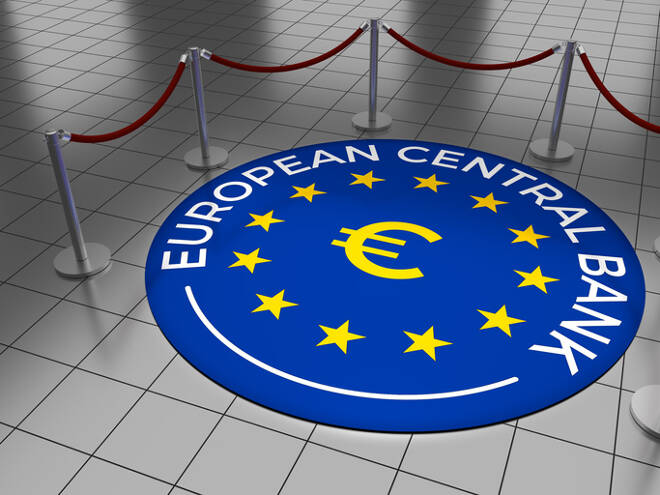Advertisement
Advertisement
Jobs Report Will Lift Uncertainty Off Fed, Move it to ECB
By:
In my opinion, after the jobs data is released on Friday and traders make their position adjustments, the uncertainty over the Fed’s July 31 monetary and interest rate decisions will be lifted and the uncertainty will shift to the European Central Bank. This should lead to further pressure on the EUR/USD. One problem for EUR/USD traders is that the ECB makes its next interest rate and monetary policy decision on July 25 and the U.S. Federal Reserve will make its decisions on July 31.
Early Friday, the U.S. Dollar is hovering near its highest level of the week against a basket of currencies, and the Euro is pressing its low for the week. This, ahead of the U.S. Non-Farm Payrolls report that is expected to have an impact on the Fed’s interest rate decision at its next monetary policy meeting on July 30-31.
How can this be? I thought the dollar was declared dead a couple of weeks ago? Is it possible that investors have already priced in a Fed rate cut at the end of July and have already moved on to a rate cut the European Central Bank?
Is it possible that the market believes the Fed has a better grasp of the U.S. economy than the ECB has of the Euro Zone economy?
What is Price Action Telling Us?
On June 18, the day before the last Fed monetary policy announcement, the EUR/USD hit a low of 1.1181. On June 25, the day Fed Chairman Jerome Powell and St. Louis Fed President James Bullard dampened the chances of a 50 basis point rate cut by Fed policymakers in late July, the EUR/USD hit a top of 1.1413.
The mid-point of the 1.1181 to 1.1413 range is 1.1260. On July 3, the EUR/USD hit its low of the week at 1.1269, just 9 points over the 50% level.
Since the main trend is still up, one scenario suggests that investors are still betting on a 25 basis point rate cut by the Fed, but will make a further determination of a 50 basis point cut after the release of the jobs report.
If the jobs data comes in well below expectations then look for a new secondary higher bottom to form at 1.1269. This could trigger a surge to the upside.
If the jobs report meets expectations then look for the EUR/USD to continue to weaken since traders will shift their focus on future ECB policy.
ECB Meets July 25, Fed Meets on July 31
One problem for EUR/USD traders at this time is that the European Central Bank makes its next interest rate and monetary policy decision on July 25 and the U.S. Federal Reserve will make its decisions on July 31.
The current plunge in German interest rates could be indicating that investors want a rate cut at the July 25 meeting. However, all signs point toward ECB policymakers not being ready to rush into additional monetary stimulus at this time, preferring instead to wait for more data on the economy.
If the ECB passes on a July rate cut, will investors expect it to be more aggressive in September?
Nick Kounis, an economist at ABN Amro NV in Amsterdam expects a change in policy language in July and a 10 point cut in September. “… “I think there is a clear case for the ECB to act already in July on the basis of the inflation outlook, inflation expectations and downside risks to growth – I’m just not sure whether the Governing Council is there yet.”
Commerzbank and Morgan Stanley expect 10 basis points as early as July. HSBC forecasts 10 basis points in both September and December, and Goldman Sachs foresees 20 basis points in September. Morgan Stanley and Goldman Sachs also expect a resumption of quantitative easing.
ECB Delay Could Expose Euro Zone to More Risks
If the ECB passes on a rate cut in July then the Euro Zone economy could face increased risks throughout the summer if the U.S. follows through with its threat to impose more tariffs on European Union goods.
Furthermore, if the Fed cuts and the Euro resumes its rally against the U.S. Dollar then this would undermine Euro Zone inflation by depressing import costs and weigh on growth by making the bloc’s exports more expensive.
Finally, what about the ECB’s succession plan with President Mario Draghi leaving office on October 31? Will the ECB decide on a successor before September? Will policymakers be willing to put more stimulus in place knowing it will effectively tie the hands of the next president until the end of the year?
More Risks to Euro
In my opinion, after the jobs data is released on Friday and traders make their position adjustments, the uncertainty over the Fed’s July 31 monetary and interest rate decisions will be lifted and the uncertainty will shift to the European Central Bank. This should lead to further pressure on the EUR/USD.
About the Author
James Hyerczykauthor
James is a Florida-based technical analyst, market researcher, educator and trader with 35+ years of experience. He is an expert in the area of patterns, price and time analysis as it applies to futures, Forex, and stocks.
Latest news and analysis
Advertisement
